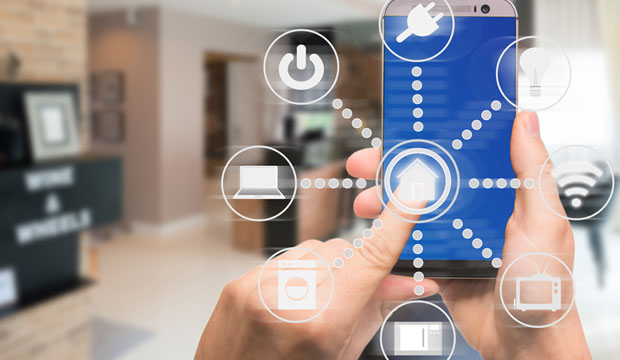Smart Homes: The Power, the Pleasure and the Pain, Part 1
Smart homes are here. Although not every home in the United States is tricked out with the latest technologies, they’re no longer a rarity.
For example, a hefty 41 percent of the people who responded to an online survey ReportLinker conducted last year said they already owned smart home devices.
Other findings:
- 48 percent of respondents managed their solutions through an app rather than a wall-mounted terminal or tablet;
- 20 percent had connected appliances;
- 16 percent had smart thermostats;
- 12 percent used smart security devices; and
- 10 percent used smart lighting solutions.
Sales of smart refrigerators and washing machines more than doubled in 2017, according to Futuresource Consulting, and they will constitute more than half the global market by 2021. They mainly use WiFi for connectivity.
Meanwhile, shipments of voice-controlled devices such as the Amazon Echo and Google Home speakers were 159 percent higher in 2017 than in 2016, ABI Research found.
“It is the platforms behind these devices that are part of a long-term play to capture an increasingly valuable smart home data stream; one that provides not just detailed insights into the homes they are in but will also be the foundation for a new generation of valuable and integrated services,” noted Jonathan Collins, research director at ABI.
Nearly 40 percent of U.S. interactive security systems dealers who participated in recent Parks Associates research reported that half or more of their sales included a smart home device. Nearly half the dealers who were not offering interactive systems said they planned to do so within the next 12 months.
In short, expect more and more smart home devices that communicate with each other using WiFi as well as connecting externally to the Internet.
Connectivity Issues
That raises the question, what happens when a connection to the Internet is down? AWS has experienced several outages. The latest, which occurred earlier this month, took out Alexa voice controls for many consumers. Google servers also have gone down on occasion, and distributed denial of service attacks have cut off Internet service from time to time.
“The impact of the loss of Internet connection would vary greatly from one area of the smart home to the next,” said Filipe Oliveira, a market analyst at FutureSource Consulting.
The impact also would depend on specific features of the device.
“A smart lock that only works via WiFi would lock the house during downtime, but most smart locks would be installed in addition to the existing manual lock,” he told TechNewsWorld.
WiFi downtime would not stop devices from fulfilling their primary functions, Oliveira said. For example, washers would run normally, though remote voice commands would not work.
Security would be the most affected part of the smart home, he said. “Live feeds from connected security cameras would stop during downtime, but in the case of security cameras with internal storage and battery backup, video could continue to be recorded and stored.”
What to Do?
Homeowners should have systems in place that help maintain connectivity, said Tom Kerber, director of IoT strategy at Parks.
Security and other critical systems typically have redundancies like battery backups and backup cellular connections, he pointed out, which allow them to function when power or connectivity is lost.
The number of smart devices that can be installed by the homeowner is growing, and DIY devices will exacerbate the problem.
“The average consumer has the expectation that these devices will work as planned,” Kerber said. “As a result, many don’t do any additional preparation for the event that the device loses Internet connectivity.”
Minimizing an Outage Impact
“Do not purchase and install a device where lack of Internet connection would leave you as a user worse off than by using a non-connected device,” FutureSource’s Oliveira advised.
Make sure you know how to operate smart devices manually even if they’re normally voice-controlled, he added.
Homeowners installing DIY devices should ensure there are battery and cellular connection backups, Parks’ Kerber said. Also, they should select home network routers with support systems that monitor and optimize the home network to maintain strong device connections.
Make sure you know how to operate your IoT devices in case of a power or network failure and communicate the backup plan with the family “so they don’t drive you nuts if there’s an outage while you’re at work,” suggested Rob Enderle, principal analyst at the Enderle Group.
Have a UPS system connected to critical systems in case of electrical outages, he told TechNewsWorld.
Make sure you know where to find the keys to your smart locks in case they fail, Enderle added. Put all related manuals and unique tools in one place “so you can find them if you have to get your IoT stuff working again or need to work around it.”
Make sure every smart device has some sort of manual backup control, advised Michael Jude, research manager at Stratecast/Frost & Sullivan.
Have more than one way to get to the intelligent agent controlling the smart home or device, he told TechNewsWorld. “Have both a local device and a smartphone app.”























































